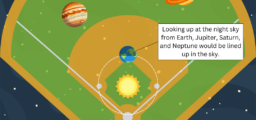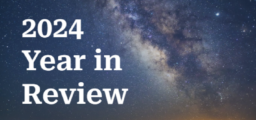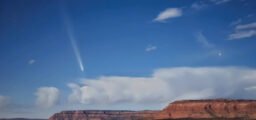SVO to host viewing of Comet A3 Tsuchinshan
By Rich Csenge
Stellar Vista Observatory (SVO) will host a free public observing opportunity to view the bright Comet A3 Tsuchinshan-ATLAS (C/2023 A3) through telescopes and binoculars on Monday, October 14, about an hour after sunset, beginning at 7:45 pm, MDT, at the Jackson Flat Reservoir boat launch parking area.
On this night A3 will be beautifully positioned 11 degrees above the western horizon among other luminous celestial objects including the planet Venus and the red giant star Antares to its south, and the red giant star Arcturus to its north.
A particularly unusual phenomenon occurs on this night only. When Earth’s orbit happens to line up exactly with the orbital plane of the comet, as it does on the 14th, the comet’s long tail pointing upward will be counterbalanced by a short but visible “anti-tail” pointing in the opposite direction consisting of a stream of dust previously shed from the comet.
So, what is a comet? According to NASA, comets are frozen leftovers from the formation of the solar system composed of dust, rock, and ices; cosmic snowballs that orbit the Sun. Ranging from a few miles to tens of miles wide when frozen, as a comet’s orbit approaches the Sun, the snowball heats up spewing dust and gases into a giant glowing head larger than most planets. This material forms the comet’s tail, stretching away from the Sun for millions of miles.
Astronomers believe there are billions of comets orbiting our Sun in the Kuiper Belt, a doughnut-shaped disk of material left over from the formation of our solar system located beyond the orbit of Saturn, and also in the much larger and more distant Oort Cloud, believed to be a vast spherical shell of billions more comets surrounding the Sun.
Comet Tsuchinshan-ATLAS (C/2023 A3) is the brightest comet to appear since NEOWISE (C/2020 F3), which passed by the Earth in 2020. A3 has already been seen in the morning sky and is now rounding the Sun, and transitions to the evening sky on October 9. For a few days afterward it will be nearly impossible, and even dangerous to try and observe because of its close proximity to the Sun.
On Saturday, October 12, it makes its closest approach to Earth (44 million miles) and can be safely viewed about 45 minutes after sunset, but it will be very low on the horizon and setting. Throughout the month of October, the comet will rise higher by the day, arcing through the constellation of Ophiuchus and fading in brightness as it moves further from the Sun. For a graphic illustration of the trajectory of the comet this month, go to: https://skyandtelescope.org/astronomy-news/get-ready-for-comet-tsuchinshan-atlas-the-best-is-yet-to-come/
On the night of Tuesday, October 15, A3 will pass just 1 degree to the south of the lovely M5 globular star cluster. Both will be easily visible in a telescope. Our waxing gibbous Moon is full on October 17 which will make the comet more difficult to see until around October 21 when full darkness falls again before moonrise brightens the sky later on in the evening.
Stellar Vista Observatory is a nonprofit charitable organization based in Kanab creating opportunities for people to observe, appreciate and comprehend what can be seen in the beautifully dark and starry skies of southern Utah. Visit https://stellarvistaobservatory.org/ for more information or to get involved!






Comments are closed.